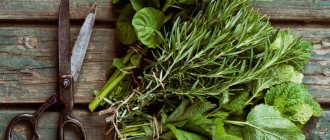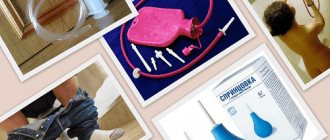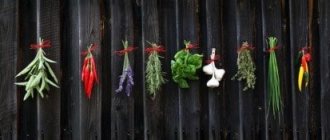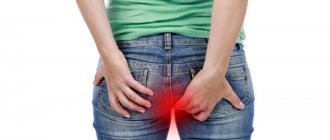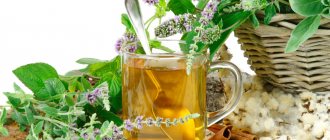Types of hemorrhoids
This disease can be internal or external. But often people simultaneously develop hemorrhoids that combine these two types. With the internal manifestation of the disease, after defecation, you can notice blood appearing in different quantities. Often in this case the patient feels itching.
External hemorrhoids during exacerbation are accompanied by swelling, pain and discomfort, especially when moving. Severe pain occurs when thrombosis of hemorrhoidal veins occurs. In each individual situation, it is necessary to select certain medicinal herbs, a description of which is given below. Before starting therapy, it is important to be sure that you have hemorrhoids, since some of its symptoms are very similar to other types of diseases.
Treatment with traditional methods
If you carry out a treatment course using folk remedies, the first relief comes after about a week.
This method is effective because the herbs are very gentle and reliable. After such therapy, people forget about this disease for a long period. The first thing to do is to normalize stool and eliminate even mild constipation. You also need to relieve inflammation. For this, there are medicinal herbs for hemorrhoids, such as oak bark, flax flowers and water pepper herb. They need to be taken in equal parts. Next, the lard is melted and mixed with crushed plants. The medicine is infused for 12 hours, but the composition needs to be stirred from time to time. After half a day, the ointment is heated over low heat and filtered. This product is kept in a cool place where there is no light.
To insert into the anus, a tampon twisted from gauze is lubricated with ointment. Keep it inside for about 4-5 hours. This way you can relieve inflammation, tighten cracks and reduce pain.
Other methods
There are also more ancient methods of treating hemorrhoids. So, for example, a recipe for curing varicose veins of the rectum from an ancient Siberian herbalist has survived to this day. This recipe reads as follows:
- Make red rowan juice (it must be freshly prepared).
- Drink this drink 3 times a day, two small glasses.
- If desired, you can add sugar to it.
- Be sure to drink it with clean spring water (200 ml).
Hemorrhoids: herbal treatment.
A more detailed description of the disease, traditional methods of treatment, as well as what herbs for hemorrhoids can be used at the initial stage of the disease can be found on our blog. Don't forget to share the link to the article on social networks by clicking on the appropriate icons.
Herbs for hemorrhoids: which ones to drink when inflammation begins?
At the initial stage, at the first symptoms, you can make tea from carrot tops. It must be taken for about two weeks, three times a day, a glass each time.
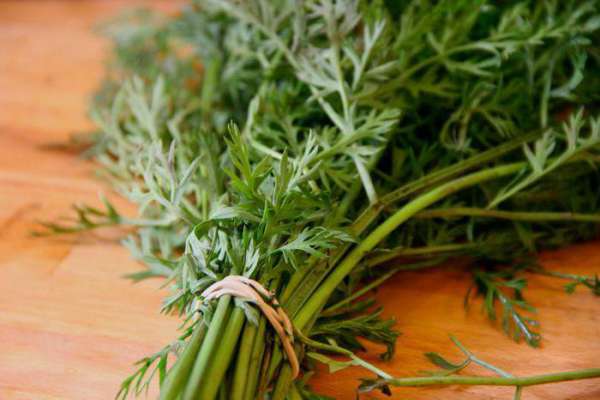
Prepare an infusion from a mixture of coriander, yarrow, senna, licorice root, and buckthorn bark. All components must be mixed in equal parts. Pour one spoonful of boiling water. Leave until the liquid has cooled completely, then strain. During inflammation or pain, drink half a glass.
Treatment with chamomile should be a mandatory procedure, since its flowers are famous for their anti-inflammatory effects. But besides this, it helps reduce pain and also reduce swelling of the nodes. It also reduces the itching sensation. To get the effect, it is recommended to drink tea from flowers. To do this, use one teaspoon of the plant per glass of boiling water. Tea is drunk with honey added. You can make chamomile baths.
Mullein herb for hemorrhoids - quick pain relief
The ancient Romans used the mullein plant to create torches and made hair dye from its yellow flowers. Aristotle knew that mullein seeds had a narcotic effect and used them for fishing.
Modern scientists have found that mullein contains 2.5% mucus, which soothes sore throats, ascorbic acid, approximately 11% sugar and saponins.
- Tea from this plant also has astringent properties, so mullein herb for hemorrhoids helps to quickly relieve pain and inflammation of hemorrhoids.
- A tincture of mullein leaves and flowers treats sore throat, constipation, cough and asthma. Caution is necessary when handling the leaves of this plant because they can cause contact dermatitis.
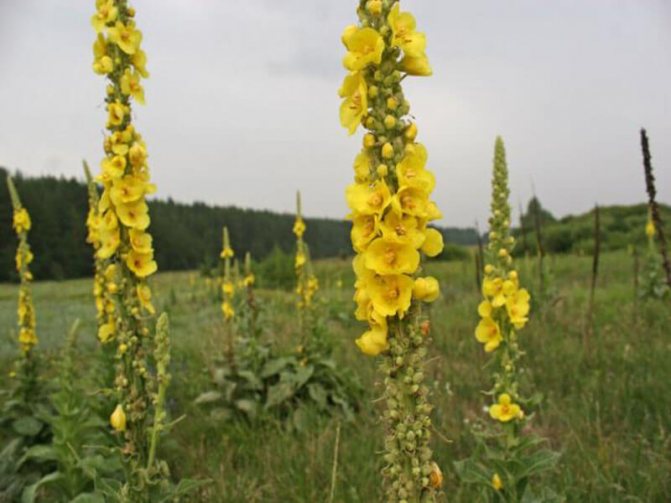
The ingredients for mullein herb tea are flowers collected directly from a healthy plant or purchased dried.
Practicing herbalists make tea by mixing one tablespoon of dried inflorescences with a glass of boiling water and steeping for two hours. This tea should be drunk gradually throughout the day. Honey can be used as an optional sweetener.
The US Food and Drug Administration lists mullein as poisonous to fish because its seeds contain the toxin rotenone. The seeds are not safe to use for mullein tea.
How to relieve severe inflammation?
This collection of herbs for hemorrhoids will help effectively relieve inflammation. One part shepherd's purse, two parts each chamomile, yarrow, calendula, black poplar buds, peppermint and sage leaves. Three parts each of nettle and elecampane (roots). All herbs are poured into one container, crushed and mixed. Measure out two spoons of the mixture and brew in 0.5 liters of boiling water. Set aside for 10 hours. Drink 50 grams three times a day.
St. John's wort, in addition to relieving inflammation, is a hemostatic agent and antiseptic. To prepare the potion, you will need a glass of water and a spoonful of herbs. Boil for 15 minutes over low heat. Drink ¼ glass every day in the morning, afternoon and night.

The most effective herbs against hemorrhoids: recipes, methods of application and photos of plants
Now let's figure out which herbs to drink and which to use externally, since each plant has a strict list of indications and contraindications. In addition, it is imperative to follow the rules for preparing herbal remedies and their use.
We bring to your attention the TOP 10 most effective medicinal herbs that can be used to treat hemorrhoids.
Hemorrhoids herb
Knotweed, which is often called hemorrhoid grass, contains flavonoids, vitamins, microelements, and tannins. Flavonoids, tannins, ascorbic acid and vitamin C are especially useful for hemorrhoids.
Thanks to the well-coordinated work of the ingredients, knotweed has the following healing properties:
- anti-inflammatory;
- hemostatic;
- decongestant;
- painkiller;
- healing;
- laxative.
The most effective are baths for hemorrhoids with a decoction of this plant, which are prepared as follows: 100 grams of kidney herb are poured with two glasses of boiling water and simmered over low heat for 25-30 minutes. The finished drug is diluted with 3 liters of cold boiled water and used for a sitz bath. The procedure is carried out twice a day for 15 minutes throughout the entire period of exacerbation of hemorrhoids.
Also, a decoction prepared according to a similar recipe is used for lotions and microenemas.
To make a lotion, you need to moisten a piece of gauze with the broth and apply it to the sore spot for 15 minutes. The procedure is repeated 3-4 times a day.
For microenemas you will need 40-50 ml of decoction, which is injected into the rectum using a rubber syringe once a day before bed for 5-7 days.
For internal use, it is better to take a herbal infusion: 10 grams of knotweed, pour 2 cups of boiling water and leave for 7-8 hours, after which drink 130 ml three times a day before meals.
Sage
Sage contains an equally impressive range of healing components, including bioflavonoids, acids, tannins, alkaloids, essential oils, phytoncides and others.
Sage has a number of medicinal effects, namely:
- antibacterial;
- pain reliever;
- astringent;
- disinfectant;
When treating hemorrhoids, you can use the following methods:
- baths. For this procedure, sage is combined with chamomile and calendula, since these medicinal herbs have an anti-inflammatory effect. To prepare the decoction, you need to take two tablespoons of sage, chamomile and calendula, pour boiling water over them and simmer over low heat for 15 minutes. Cold sitz baths are made with the prepared decoction, which are carried out twice a day for 20 minutes. You can also take a general bath with this decoction;
- lotions. For severe pain in the anus, a lotion with sage decoction helps a lot. To do this, pour three tablespoons of the plant into 2 cups of boiling water, boil over low heat for 20 minutes and cool. Moisten a piece of gauze with the prepared medicine and apply it to the anus for 10-15 minutes 3-4 times a day;
- ingestion of sage decoction. For internal use, use a decoction according to the recipe described above. The drug is drunk 100 ml three times a day before meals.
Stinging nettle
Stinging nettle is a natural hemostatic agent that has been successfully used in the treatment of hemorrhoids. In addition, this plant improves the functioning of the digestive tract, eliminates constipation, removes toxins from the body and improves immunity.
In the treatment of hemorrhoids, a decoction of nettle is used, which is prepared according to the following recipe:
- Pour 5 tablespoons of nettle leaves into 1 cup of boiling water, simmer over low heat for 5 minutes, then let steep for another 20 minutes.
This nettle decoction is suitable for baths, lotions, compresses, microenemas, and also for oral administration.
Chamomile
Chamomile is known for its anti-inflammatory properties, due to which it is widely used in the treatment of various diseases, in particular hemorrhoids.
Traditional methods to help stop bleeding
With the remedies suggested below, you can stop bleeding from hemorrhoids on the very first day of taking it, but it is recommended to observe bed rest for a couple of days:
- In the fall, it is necessary to collect, wash, dry and chop cucumber stems. For half a liter of clean water, 50 grams of chopped stems is enough. The product must be boiled and set aside until it cools completely. Drink half a glass at a time.
- A tablespoon of dried stinging nettle leaves is diluted with a glass of boiling water and kept over low heat for another 10 minutes. After cooling, the brewed herb for hemorrhoids must be filtered. Drink the medicine about five times a day, one tablespoon at a time.
- Raspberry roots need to be chopped. Place a spoonful of the raw material in a glass of boiling water and wait 20 minutes. Then put on fire and simmer for 10 minutes. The cooled and strained infusion is taken before meals, a tablespoon, 3 times a day.
Hog queen
Women take products based on boron uterus at the beginning of menopause, which is accompanied by hormonal imbalance due to insufficient production of estrogen. In cases of uncontrolled use of plant decoctions, increased menstrual flow may be provoked. But women who have been diagnosed with uterine fibroids and endometriosis note that the uterus helps reduce the amount of blood lost and helps get rid of pain and cramps in the lower abdomen.
There are two ways to prepare medicines based on boron uterus:
- Decoction. 1 tbsp. pour a glass of boiling water over the raw material, simmer the mixture for 15 minutes over low heat, then strain. The hemostatic agent relieves inflammation, relieves pain, and normalizes the cycle if you take the drink one tablespoon 3 times a day. The finished medicine should be stored in the refrigerator for no more than 5 days.
- Alcohol tincture. 50 or 60 gr. dry herbs should be poured with 0.5 liters of vodka or diluted alcohol, leave in a dark place for about 2 weeks. Use the infusion 1 tsp. three times a day.
To reduce the activity of benign cells in fibroids, it is recommended to drink the decoction for 3-4 cycles in a row, excluding the period of the critical days themselves. During the use of the product, patients with endometriosis notice a decrease in pathological foci, which is confirmed by research results.
Treatment of bleeding hemorrhoids
Two spoons of knotweed are dipped into a glass of boiling water. Heat in a water bath for about 10 minutes. Leave in a warm place for another two hours. Take before meals, three times a day. Only one tablespoon is drunk at a time. It’s not bad if you make baths in a basin from the broth. The duration of treatment is about two months.
4 tablespoons of crushed viburnum bark should be boiled in a glass of water for half an hour. The drug is strained while hot and diluted with water to its original volume. Drink a tablespoon a day before meals.
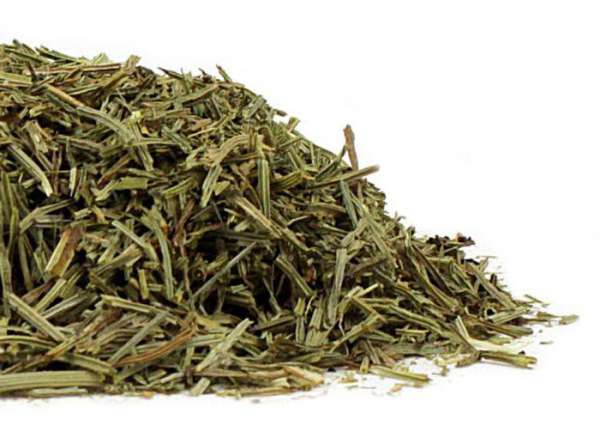
Horsetail herb (2 tsp) is poured with a glass of boiling water and infused for about an hour, after which it is filtered. Drink in sips throughout the day.
Treatment of hemorrhoids with herbs using plantain and onion
Treating hemorrhoids with herbs such as onion and plantain is a very inexpensive and yet effective way to get rid of a delicate problem.
- To treat hemorrhoids with onions, take two cups of finely chopped or grated green onions, mix with wheat flour and fry in animal fat until the mixture resembles an ointment.
Apply a thick layer of ointment to a cloth and place it on the damaged area of the body before going to bed. Repeat this procedure for two days. - Plantain has proven itself in the treatment of hemorrhoids with herbs. Make strong tea with 30 gr. granulated plantain and 0.5 liters of boiling water. Let it sit for 20-30 minutes.
To treat hemorrhoid symptoms, use a syringe (without a needle) to squirt one tablespoon of this tea into the anus three or four times a day and especially after each bowel movement. Can be used more often in severe cases.For external hemorrhoids, plantain tea is used externally. It is applied to soft gauze or cotton cloth and held on the affected area using adhesives. An ointment or poultice made from fresh plantain can be applied in the same way.
Painkillers
Another herb for hemorrhoids is peppermint. Not only does it help manage pain, but it can also stop bleeding. The infusion is mainly used for enemas or baths. To prepare, you will need to boil water and wait until it cools. One glass of liquid requires 20 grams of knotweed. Infuse the herb in cool water for eight hours. Treatment is carried out with strained infusion.
A good painkiller is a decoction of wormwood. This herb also relieves inflammation. Add four tablespoons of crushed wormwood to a liter of water, stir and boil. After boiling, reduce heat and simmer for another five minutes. When the broth has cooled to body temperature, it is filtered and microenemas or compresses are applied.
You can also use bay leaf, which calms pain, reduces swelling, and relieves bleeding. To prepare the medicine, you need to pour boiling water (3 liters) into 20 whole bay leaves. Cover the container loosely and wait for natural cooling. The course of treatment lasts two weeks. Every morning you need to drink a glass of heated infusion. Keep refrigerated. This product can additionally be used externally.
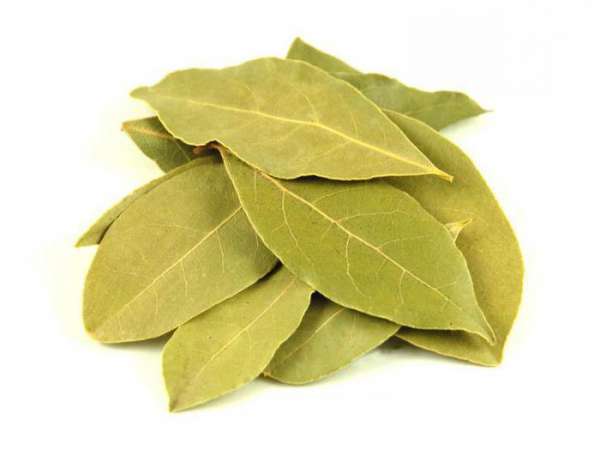
Other folk remedies for hemorrhoids
Traditional medicine offers methods for treating hemorrhoids using:
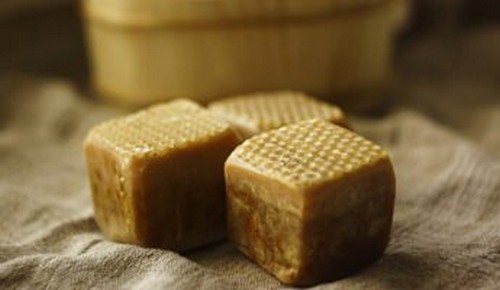
- Cinnamon and honey. Cinnamon and honey are mixed in equal proportions and the resulting mixture is applied to the cones (for external hemorrhoids).
- Pork lard with plants. Hot lard, flax flowers, oak bark, and peppermint herb are mixed in equal proportions. The mixture is put on fire for 2 hours. The resulting ointment is used to lubricate the cones.
- Propolis. 10 g of propolis in a crushed state is mixed with 100 ml of vegetable oil, sea buckthorn oil can also be used. The mass is heated in a water bath until the propolis dissolves. The medicine should be stored in a cool place.
Ways to normalize stool with hemorrhoids
As already mentioned, the herb for hemorrhoids should help the intestines. Field steelhead can cope with this, but in addition it is a means of stopping bleeding and healing cracks. For the decoction you need the roots of steelhead. The crushed plant (30 g) is boiled in a liter of water until the liquid is reduced by half. Drink ¼ cup strained before meals. Every day, three times, for three weeks.
Sometimes diarrhea occurs with hemorrhoids. In this case, an infusion of lungwort herb is prepared. For two glasses of boiling water - a little less than two tablespoons of crushed plant. The herb is poured with boiling water and set aside to cool at room temperature. Take the medicine up to four times a day, half a glass.
Herbs for hemorrhoidal fissures
- Wormwood . A decoction of wormwood (four tablespoons of dry herb per liter of water, brought to a boil over an open fire) is used for microenemas to relieve pain and discomfort in the anus. Thanks to its antiseptic effect, wormwood decoction perfectly promotes tissue restoration and regeneration. Wormwood decoction is also recommended as a lotion for healing microcracks.
- Burdock . This weed is traditionally used in the treatment of hemorrhoids. Burdock decoction is used in the form of sitz baths (twice a day for ten minutes), as well as in the form of lotions. To prepare a decoction, you need to chop one dried burdock root well and add a liter of water. After this, the broth must be boiled until its color turns dark brown. Burdock decoction is specifically used to heal microcracks in the anal area due to hemorrhoids.
- Knotweed (knotweed) . This plant, growing in literally every yard, can have a very good wound healing effect. To do this, the grass should be collected and washed well. After this, the grass is crushed into a paste and applied to the inflamed hemorrhoids and anus.
- Snake knotweed (kidney grass) . This herb is used to treat manifestations of both external and internal hemorrhoids. The decoction acts as an anti-inflammatory, analgesic and tissue regenerating agent. To prepare a decoction, take two teaspoons of dry herb and pour a glass of water. Boil everything over low heat. After this, the broth is removed from the heat and wrapped in thick cloth for two hours to allow the broth to infuse. Only after this can the broth be filtered. Take the decoction orally three times a day before meals, 100 milliliters of decoction at a time. You should drink until the symptoms of the disease disappear completely. Also, this decoction can be used in the form of lotions, and can also be used in the form of ice rectal suppositories.
- Aloe . A well-known houseplant for many people. Due to its ability to prevent the spread of infection and hemostatic effect, aloe is considered an effective remedy in the fight against hemorrhoids. Aloe leaf is ground into a paste and applied daily to the inflamed anus for half an hour, which provides the desired effect.
Other plants: dogwood
The medicinal properties of dogwood have been studied for a long time, and it has been established that the berries of this plant help best with hemorrhoids. It affects the walls of blood vessels, increasing their strength, and cleanses the body, normalizing stool. It also reduces swelling, itching, pain, and redness. Immunity is strengthened. It is recommended to consume 60 grams of berries per day. It can be noted that the fruits are allowed to be eaten with seeds; they do not harm the body, and some herbalists insist on their invaluable benefits.
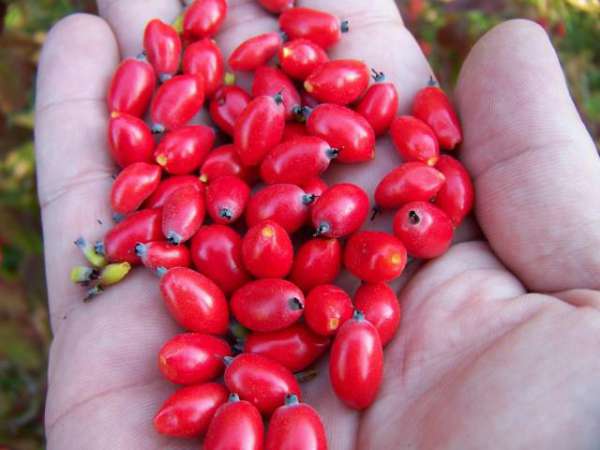
But before carrying out treatment, it is important to make sure that the patient does not have allergies or problems with digesting food. In the absence of these nuances, you can use dogwood. This plant does not lose its medicinal properties during heat treatment, so decoctions and infusions are made from it.
Benefits of mullein
Another effective herb for hemorrhoids is mullein. But it is worth remembering that this plant comes in different types. Most often, high mullein is used for hemorrhoids. It may be known as royal or goldenflower. You can easily purchase dried mullein at the pharmacy. The properties of this plant for hemorrhoidal inflammation include anti-inflammatory, hemostatic, regenerating, analgesic and antispasmodic effects. You can take mullein both externally and internally.

To prepare a decoction, you will need a few tablespoons of the plant. Place the herb in a small saucepan and add already heated water. Leave on low heat, covering with a lid. After 15 minutes, the broth is removed from the stove and left for an hour and a half. At the next stage, it is filtered and poured into a convenient container. Drink 100 ml several times a day. If the patient has good tolerance to this product, treatment continues for two weeks.
If desired, you can make baths. To do this, the mullein collection is poured with boiling water and left until the liquid cools to a comfortable temperature. The duration of the procedure is 10 minutes.
Effect of medicinal herbs
- Wormwood – has anti-inflammatory, anti-edematous and analgesic effects. You need to prepare an alcohol tincture from it, put one tablespoon per 100 ml, keep it in a dark, dry place for a day and take 15 drops twice a day for a week to relieve severe pain. And for microenemas and compresses, you can prepare a concentrated infusion of 4 tablespoons per liter of boiling water, simmer for 5 minutes, stirring, leave overnight.
- Dogwood - has a pronounced antimicrobial and antimalarial effect, astringent, analgesic and general tonic. Used for oral administration in different forms: 5 berries with seeds three times a day. You can make fruit juice or drink tea with dogwood jam.
- Scepter mullein is a specific herb for hemorrhoids, which has a hemostatic and anti-inflammatory effect, and in addition, contains mucus to facilitate the act of defecation.
- Yarrow – has an active anti-inflammatory effect, works as an antispasmodic and antiseptic, and successfully fights bleeding. Drink like tea, 500 ml per day is the optimal dose. Traditionally, 1 tablespoon is brewed per half liter of water.
- Chamomile is a universal anti-inflammatory, decongestant and gentle antispasmodic and sedative. The infusion is prepared as follows: 50-60 g per 2 liters of boiling water, leave for 2-3 hours and take a sitz bath until it cools completely, the course can be extended to 2 weeks. Or infuse 30 g in 300-400 ml of water and can be taken orally.
- Peppermint (water pepper) is called hemorrhoid herb, as it has a good astringent, antimicrobial and antifungal, general tonic and restorative effect for small vessels, resulting in a hemostatic effect. Improves regeneration. The recipe is as follows: 1-2 tablespoons are poured into one liter of boiling water, brought to a boil again, the finished solution is used for sitz baths and compresses, or drunk as tea every day.
- Steppe cloves are rich in astringents, essential oils and vitamin A. This reduces swelling and distension of tissues, relieves inflammation and itching. Flowers are used for infusion, 15 g is poured into a liter of cold water and infused for 7-8 hours, take one tablespoon three times a day, or dilute the resulting infusion four times and take baths for 2-3 weeks in a row.
- Burdock - the root of this weed plant has good anti-inflammatory properties, resulting in reduced itching and pain. It is boiled until the water turns dark brown, then used for a sitz bath several times a day.
- Knotweed (knotweed) is another assistant in the fight against hemorrhoids; it has a hemostatic, astringent-tanning effect, and eliminates inflammatory swelling and pain. Its leaves must be washed well, dried and used as a compress.
- Burnet - the root of this plant has a pronounced astringent effect, works well on superficial vessels, narrowing them and strengthening the wall, thanks to vitamin C. It has a hemostatic effect, reduces inflammation, and as a result pain goes away. Take 1 official tablet orally three times a day. A decoction, which is prepared from 1 tablespoon of crushed root, diluted in 1 glass of boiling water, boil it for half an hour, strained, take 1 tablespoon 5-6 times a day or used for lotions and baths. You can also make an infusion of burnet - in a ratio of one to ten.
- Knotweed (renal herb) is one of the well-known herbs in the fight against hemorrhoids; it has a laxative and decongestant effect, reducing inflammation in the hemorrhoidal area. Prepare this way: 2 teaspoons of dry herb are mixed with half a liter of water, boil for 15-20 minutes and leave for 3 hours.
- Bay leaf - there is no house where it would not be. Pour an incomplete tablespoon of chopped laurel into a glass of boiling water and use for lotions and compresses for at least 30-40 minutes. And if you dilute it in 100 g in 5 liters of boiled water, you can use it as a bath. The 10-day course is alternated with a week break, until the symptoms subside. But the decoction can be taken a glass a day for 2 weeks with a month break (steam 25 leaves with three liters of water)
- Mad cucumber – has a mild laxative and pronounced hemostatic effect. But, it can only be used externally, without contact with mucous membranes. Prepare this way: 10 dried and chopped cucumbers and dilute in half a liter of cold water, leave for 6-7 hours and use only as lotions.
- Meadowsweet – has anti-inflammatory, analgesic, antimicrobial effects. The infusion is made from standard proportions of 1 tablespoon per 500 ml of boiling water, leave overnight and take a small tea cup once a day.
- Aloe works great and is easy to use. After peeling the leaf, shape it into a rectal suppository, put it in the refrigerator and dip it in honey before inserting. The effect of the herb will be enhanced by the cooling effect and the auxiliary effect of honey.
- Elderberry - another well-known weed plant turns out to be an assistant in a complex disease. The inflorescences are used in an infusion, have a good rheological effect, relieve inflammation and tone the vascular wall. Take 10 g of dry raw material and pour into half a liter of cooled water, leave overnight, strain, drink 50-6 ml several times a day before meals. The resulting infusion can be used externally, for lotions and compresses, and diluted several times for sitz baths.
- Dubrovnik – all parts of this plant have an anti-inflammatory and decongestant effect, reducing bleeding from hemorrhoids. Take 2 tablespoons of the herb and dilute it in a glass of boiled water; after infusing for two hours, you can use it for all local procedures.
- Calendula is a leading herb in the treatment of many diseases, as it has a pronounced anti-inflammatory and antibacterial, decongestant and analgesic effect. It is used as a raw material for homemade ointment - 50 g of inflorescences are mixed into melted lard in a water bath, then the resulting product is stored in the refrigerator. Included in one of the antihemorrhoids collections. But, due to its pronounced active effect, there are some contraindications for its use - for pregnant women, hypotensive patients and depression.
- Linden - the incredible activity of the substances contained in this plant has an antibacterial and general anti-inflammatory effect, improves the general condition, and thanks to the diaphoretic effect, actively removes toxins from the body. Flowers are used as raw materials, one tablespoon is poured with 180-200 ml of boiling water, the resulting mixture is infused for half an hour. And can be used as a local remedy and for oral administration.
- Belladonna (belladonna) - has a pronounced antispasmodic effect on the abdominal organs. Almost the first natural antispasmodic used in medicine. The accompanying anti-inflammatory effect helps to locally completely relieve pain and relieve reactive inflammation. This herb has all kinds of uses, but is most effective when taken orally and as a suppository. The most used and popular tincture is 1 part of the herb to 10 parts of forty-proof alcohol or vodka, leave in the light until it has a characteristic brown color and specific smell, take 1 teaspoon 2 times a day. It is imperative to remember: balladonna is contraindicated in cases of severe hypertension and heart disease, and during pregnancy and glaucoma.
In addition
It is important to note that all drugs, herbs, and folk remedies for hemorrhoids will have a better effect if, along with them, you adhere to the rules of a healthy diet and add foods rich in fiber to your diet. Such nutrition will help make the stool soft and minimize pain when visiting the toilet. Without new injuries, damaged areas are more likely to heal.
The percentage of people with sensitive diseases is constantly growing. Hemorrhoids become a common lesion of the rectum. The use of special medications causes side symptoms, and the purchase of drugs is painfully expensive. People with hemorrhoid problem use weed for hemorrhoids. A huge variety of herbs are used to relieve inflammation, pain, and restore the functioning of the body.
The most effective herbal preparations
What herbs can treat hemorrhoids:
- Chamomile . Flowers and plant extract have pronounced anti-inflammatory and antiseptic properties, which helps with exacerbation of the disease. Chamomile is harmless and can be used even during pregnancy and breastfeeding.
- Calendula exhibits bactericidal, anti-inflammatory, wound healing and antispasmodic properties. Calendula infusion is also actively used in traditional medicine, as the plant has a calming effect on the nervous system.
- Aloe is effectively used in the early stages of the disease; it is often used as part of complex therapy. The plant has antiseptic and wound healing properties. When used systemically, it improves blood rheology, strengthens blood vessels, and improves microcirculation.
- Nettle contains many bioflavonoids and vitamins. It has a general strengthening, hemostatic and healing effect. Nettle is most effective for open bleeding.
- Knotweed has hemostatic, anti-edematous and anti-inflammatory effects. It has a positive effect on the functioning of the gastrointestinal tract, so it is good to use for chronic constipation.
- The knotweed has a second popular name - “hemorrhoid grass”. It is widespread throughout the former CIS and grows like a weed. It has hemostatic, antiseptic and antispasmodic properties.
- Wormwood is actively used in the treatment of hemorrhoidal inflammation. The plant effectively relieves pain and fights blood clots.
- Yarrow, when used externally, exhibits wound-healing properties, and when taken orally, it stops moderate bleeding caused by inflammation of hemorrhoids. It also has a general strengthening effect on the body.
- Mullein is used for anal fissures, as it has enveloping and wound-healing properties. It is usually used in combination with drug treatment for proctological diseases.
- Dandelion is used for the external form of hemorrhoidal inflammation, when an exacerbation is accompanied by pain and irritation. Effectively eliminates an unpleasant condition and is actively used as an adjuvant along with medications.
- Burdock (burdock) is a weed that is widely used at home to improve the condition of the skin and normalize the functions of the gastrointestinal tract. Burdock exhibits disinfectant, choleretic, healing and antibacterial properties. Effective in local treatment of affected nodes.
- Burnet is mainly used during exacerbation, when bleeding begins. The plant has pronounced hemostatic properties, as well as anti-inflammatory and antiseptic effects.
- Sage has antiseptic, anti-inflammatory and hemostatic properties. It is actively used in both folk and traditional medicine. In case of exacerbation, the plant relieves pain, inflammation and eliminates bleeding. Has a vascular strengthening effect.
What herbs can you drink for hemorrhoids, in addition to those indicated :
- astragalus;
- gynostemma;
- gotu kola;
- caraway;
- ginger root;
- celandine;
- chestnut;
- water pepper;
- horsetail;
- rose hip.
Attention! You cannot self-medicate without first consulting a proctologist. The doctor must carefully familiarize himself with the peculiarities of the course of the disease, and then draw up a treatment regimen.
Herbs for hemorrhoids
If you decide to treat hemorrhoids with herbs, ask your doctor what herbs are acceptable to use and how to use them. Below are inexpensive and proven ways to combat inflammation.
Herbs used to treat hemorrhoids:
- Sagebrush. 1 tbsp. Dried wormwood is poured with 100 ml of alcohol and infused for 24 hours in the dark. Take 15 drops diluted with water twice a day. Cannot be used for more than 7 days in a row. The herbal infusion is used as a compress to relieve pain in the rectum. An effective way to eliminate hemorrhoids is a microenema with wormwood. For 1 liter of clean water take 4 tbsp. chopped wormwood, boil for five minutes. After boiling, the herbal decoction, covered with a lid and wrapped in a towel, is infused for 6 hours. The infusion helps to reduce inflammation of the external nodes.
- Calendula. The plant dries the skin and accelerates the resorption of hemorrhoidal cones. It is recommended to drink calendula decoction in the form of tea (a teaspoon per glass of boiling water).
- Chamomile. Known for its healing powers in the treatment of hemorrhoids. Removes burning, bleeding, eliminates inflammation. For chamomile infusion, you need to infuse 3 tablespoons of the herb in 2 liters of boiling water for 3-4 hours. Chamomile is used to make daily baths (add calendula, nettle or wormwood). The plant is used against hemorrhoids and as an antiseptic. Add 2 tsp to a glass of clean water. finely chopped medicinal chamomile root and leave to infuse for 8 hours. Take a tablespoon 4 times a day. Dried chamomile is sold in pharmacies.
- Bay leaf. Used to reduce swelling and external signs of the disease. To prepare the decoction, boil 20 bay leaves in 3 liters of water for two hours. The decoction is used for 2 weeks in the form of baths (up to 10 minutes a day).
- Burdock. Used for baths, it has a healing effect on external skin damage, relieving pain and itching. The crushed root is added to boiling water and cooked until the mixture turns dark in color. It is recommended to take a bath 2 times a day.
- Nettle. Effective hemostatic solutions on nettle leaves will become an alternative to medications. To prepare, chop the leaves and pour boiling water (half a liter will do). Drink the solution 3 times a day before meals, 1/3 cup. The treatment relieves inflammation and heals anal fissures. For proper use, consult your doctor.
- Collection of herbs. You can find medicinal preparations in pharmacies; it is recommended to use them according to the instructions to cleanse the gastrointestinal tract.
- Snake knotweed or kidney knotweed. A natural antispasmodic is used internally in the form of a decoction. 2 tsp the herbs are placed in boiling water for 15 minutes, covered with a towel, and left for a day. Take 100 ml before meals until pain and symptoms are completely relieved. Compresses and baths are useful.
- Yarrow. Medicinal ointments and infusions based on yarrow have long been used for hemorrhoids. Treatment of skin lesions and formations inside the rectum is carried out on the recommendation of doctors for the bleeding form of the disease. When brewing 2 tbsp. herbs are poured into 1 liter of boiling water. Drink in small portions (400 ml per day).
- Knotweed, bird knotweed. A compress made from plant leaves has long been used for diseases of the rectum, eliminating hemorrhoids.
- Onion. A bath on onion peels has a healing effect. Course of treatment: 8-9 days.
It is recommended to treat hemorrhoids with folk remedies carefully, using a variety of herbal mixtures in combination with medications prescribed by a doctor and rectal ointments. Medicinal herbs are used for hemorrhoids, constipation, intestinal problems, and external consequences of diseases.
What herbs are used in the treatment of hemorrhoids?
There is a large selection of herbs for hemorrhoids that help relieve painful symptoms of the disease and improve the general condition of the patient. Their use gives the most significant results in the initial stages. For severe forms of hemorrhoids, folk remedies can only be used as part of complex treatment.
Highlander
Knotweed has been used to treat hemorrhoids since ancient times. In this regard, it received another popular name - hemorrhoids grass. The high effectiveness of this plant for inflammation of hemorrhoids is due to the presence in its composition of:
- tannins;
- vitamins C and K;
- organic acids;
- flavonoids;
- essential oils.
For hemorrhoids, knotweed is used internally in the form of decoctions and externally, applying compresses. It has a hemostatic and anti-inflammatory effect, promotes tissue healing, relieves pain and swelling. When a decoction from the plant is used internally, a slight laxative effect is observed, which is a good prevention of constipation.
To prepare a decoction of knotweed for hemorrhoids, follow the recipe:
- A mixture of 2 tsp. herbs and 500 ml of water are heated in a water bath for a quarter of an hour.
- The resulting broth is wrapped in a towel and left for several hours.
- The herb is filtered, and the solution is consumed in accordance with the doctor’s recommendations.
Common mullein
The use of mullein flowers for hemorrhoids helps stop bleeding, relieve swelling, spasm, pain and inflammation. The plant also has a bactericidal effect, which is important for preventing infections in the anal area. The therapeutic effect is caused by the content of vitamins, mucus, tannins, essential oils, glycosides and other components with healing properties.
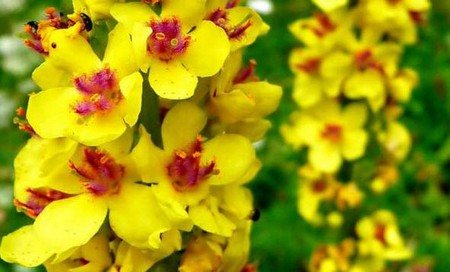
Mullein flowers
Mullein herb for hemorrhoids can be used internally in the form of decoctions and topically in the form of baths.
Aloe
Aloe is a well-known houseplant that has valuable properties and is used to treat a wide range of diseases, including hemorrhoids. The effectiveness of aloe juice for hemorrhoids is associated with its ability to stop bleeding and accelerate tissue regeneration, providing a healing effect. This plant is also used to treat anal fissures, which may be present due to inflammation of hemorrhoids.
Treatment of aloe hemorrhoids is carried out by applying compresses from crushed leaves or smearing freshly squeezed juice on external hemorrhoids. For internal hemorrhoids, suppositories made from the leaves of the plant can be used.
pharmaceutical camomile
The use of chamomile flowers for hemorrhoids is due to its pronounced anti-inflammatory and bactericidal effect. It helps reduce the intensity of pain, eliminate itching and burning, and has a drying effect. Decoctions are prepared from chamomile, which are used for microenemas and douching for internal hemorrhoids or compresses and baths for external hemorrhoids.
Chamomile baths for hemorrhoids are taken according to the following recipe:
- A mixture of 6 tbsp. l. dried flowers and 4 liters of water are brought to a boil.
- Infuse for 3 hours, cool, filter and pour into a container for taking a bath.
- The bath is taken for 15 minutes daily for two weeks.

pharmaceutical camomile
A good therapeutic effect is obtained by alternating every other day with baths of chamomile and oak bark decoctions for hemorrhoids.
Tip: When preparing a decoction for a chamomile bath, you can add calendula flowers, which also have a pronounced anti-inflammatory effect.
Birch tar
Birch tar, the use of which for hemorrhoids is associated with its bactericidal, healing and hemostatic effect, can be purchased at the pharmacy. It relieves swelling, itching and burning well, prevents the development of pathogenic microflora and stops bleeding by accelerating regeneration processes. For inflammation of hemorrhoids based on birch tar, the following is used:
- sitz or steam baths;
- ointments with Vaseline or Vishnevsky ointment;
- lotions from a gauze swab.
Improvement in the patient's condition when using birch tar occurs within a few days. Treatment is continued until symptoms disappear completely.
Bay leaf
Bay leaf is not only a seasoning, but also a medicine containing minerals, vitamins and other beneficial substances that increase the tone of blood vessels by strengthening their walls. Using bay leaves for hemorrhoids stops bleeding, relieves swelling and pain, narrows hemorrhoidal vessels and reduces the size of the nodes.
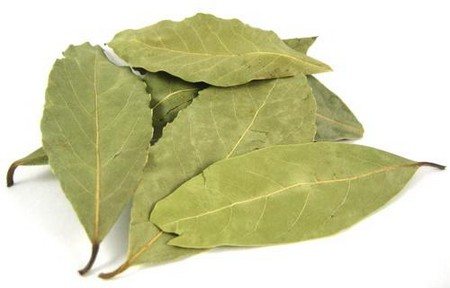
Bay leaf
A decoction of the plant is used topically in the form of compresses, microenemas or baths, as well as internally. To prepare it, you need to take 10 g of bay leaf, chop it and add 200 ml of boiling water. Bay leaf baths are prepared at the rate of 100 g of leaves per 5 liters of water.
Important: Wormwood, yarrow, horse chestnut and other plants can be used to treat inflamed hemorrhoids. Internal use of a decoction of steelhead root is effective for hemorrhoids. It has an analgesic, anti-inflammatory and hemostatic effect.
Herbal teas for hemorrhoids
Long gone are the days when people had to go out in advance to look for grass in nature. Properly formulated herbal infusions are sold in every pharmacy. They are inexpensive and are available in crushed form suitable for recipes.
Following traditional medicine recipes, doctors advise combining herbs, using them in combination. A decoction, a bath, a compress - the effect will speed up the elimination of hemorrhoids and the elimination of residual effects.
To combat hemorrhoids, plantain, strawberry, linden flowers, roses, calendula and dandelion are used. Add 2 tbsp to 500 ml of water. mixture, heating over steam. Let it cool. Honey is added. Give to the patient a little at a time throughout the day.
A proven collection of herbs with an anti-inflammatory effect is a composition of chamomile flowers, buckthorn bark, calamus, dill, and senna. A decoction is made using 2-3 tsp. mixture per 200 ml of hot water. After ten minutes of infusion, the solution is filtered. Drink 1 glass in the morning and before bed.
You should not approach treatment with folk remedies on your own, even if you are confident in the effectiveness of herbs. It is better to consult a doctor - he will tell you how to use it correctly and in what capacity it is suitable for a specific type of hemorrhoid. In diseases, self-medication is not allowed, since instead of benefit it can cause irreparable harm to the body and complicate further recovery.
Herbs for treating hemorrhoids
In order for the use of traditional medicine to have an effect in the treatment of hemorrhoids, you need to choose herbs that contain certain substances. These include flavonoids, vitamins, carotene, choline, essential oils, astringents and tannins, and organic acids. Herbal medicine is useful only in the first two stages of hemorrhoids; in the third, it acts as an additional element of treatment. Popular herbs for effectively eliminating signs of hemorrhoids include the following:
- knotweed or knotweed;
- dogwood;
- sagebrush;
- beet;
- chamomile;
- Bay leaf;
- snake knotweed, sandy;
- meadowsweet;
- aloe;
- burdock or burdock;
- yarrow;
- nettle;
- calendula officinalis;
- dandelion;
- mullein.
Dogwood
Dogwood fruits and seeds contain active substances that normalize the condition of blood vessels, strengthen their walls, relieve inflammation and have a bactericidal effect. Recipe for use No. 1:
- Eat a tablespoon of fresh berries with seeds 30 minutes before meals.
- In the morning and at night - one, at lunch - two.
- The course of treatment lasts 14 days.
Pectin eliminates swelling, normalizes metabolism and prevents anemia. Recipes for using dogwood for internal and external hemorrhoids:
- Take 15 dried berries or dogwood jam.
- The course lasts 2-3 days.
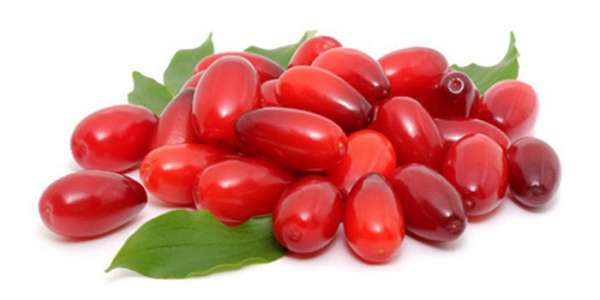
Kidney herb for hemorrhoids
Herbs for hemorrhoids will help with bleeding. Known hemostatic plants include kidneyweed or hemorrhoid grass. Recipe 1:
- Pour two tablespoons of dry herb with 2 cups of boiling water, leave overnight, strain.
- Drink in equal portions per day.
Antioxidants heal wounds, flavonoids and tannins relieve inflammation, essential oils have a mild laxative effect. Use of knotweed in recipe No. 2:
- Buy an alcohol tincture of knotweed at the pharmacy.
- Take 40 drops three times a day before meals.
- The course of treatment lasts 1-4 weeks.
Due to vitamins K and C in its composition, vascular walls are strengthened, blood viscosity increases, and astringent and drying effects are manifested. Recipe for use:
- If there is bleeding from the anus, pour 40 g of herb with two glasses of boiling water and keep in a water bath for 40 minutes.
- Cool the broth, moisten a gauze lotion with it and apply it to the damaged area.
Sagebrush
Flavonoids, tannic and organic acids in wormwood help reduce inflammation, swelling, bleeding intensity and relieve pain from hemorrhoids. Recipe No. 1:
- Pour a tablespoon of dry herbs into 100 ml of alcohol and leave for 20 days.
- Take 2 times a day, 12 drops with a spoon of water.
- The course lasts until the symptoms disappear.
The bactericidal effect of the herb allows it to be used in local and systemic treatment. Recipe No. 2:
- 4 tbsp. l. pour 1 liter of boiling water, boil for 6 minutes.
- Leave for six hours, cool to human body temperature.
- Use wormwood tincture for microenemas, 30-50 ml once a day in the evening after bowel movements.
- Wormwood decoction can be used for compresses - moisten gauze and apply to the anus for 20 minutes.
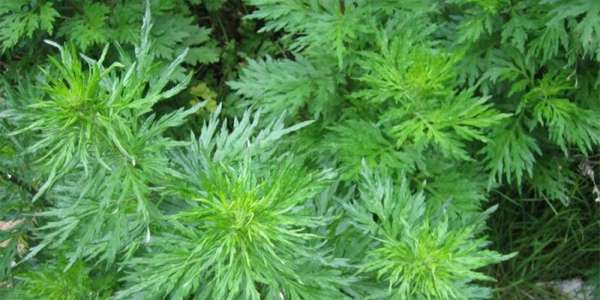
Chamomile
Chamomile inflorescences contain valuable essential oil. It is used as a hemostatic, antiseptic and anti-inflammatory agent. Recipe No. 1:
- Pour 2-3 tablespoons of flowers with a glass of boiling water.
- Leave to steep under the lid for an hour, strain.
- Rinse the outer buds.
When treating hemorrhoids, the following recipe for microenemas is used to help cope with constipation:
- Mix 10 g of chamomile, yarrow and oregano, pour a glass of boiling water, cook for 10 minutes.
- The course lasts 8-10 procedures once a day.
- A steam bath will help deal with cones - pour 100 g of flowers into 400 ml of boiling water, hold for five minutes.
- Pour into a bucket, sit on it and wrap yourself in a warm blanket.
- Sit for five minutes, repeat several times during the day for a course of four days.
Ivan tea for hemorrhoids
Fireweed or fireweed tea, when used regularly, will help completely get rid of the symptoms of hemorrhoids, fans of herbal medicine assure. Recipe No. 1:
- Tea - for half a liter of ceramic or glass teapot (other materials are undesirable), take a tablespoon of dry raw materials.
- Pour boiling water, close the lid tightly, after 15 minutes shake the contents slightly.
- Drink in equal parts throughout the day for several days.
The leaves do not contain caffeine, so they do not irritate the digestive tract. Use the following recipe #2:
- Collection of herbs with nettle, hay, buckthorn, coriander, licorice and yarrow - take the same amount of herbs.
- Pour a teaspoon of the mixture into a liter of boiling water.
- Boil for 10 minutes, leave for half an hour in a warm place, strain.
- Drink a glass 4 times a day to relieve pain.
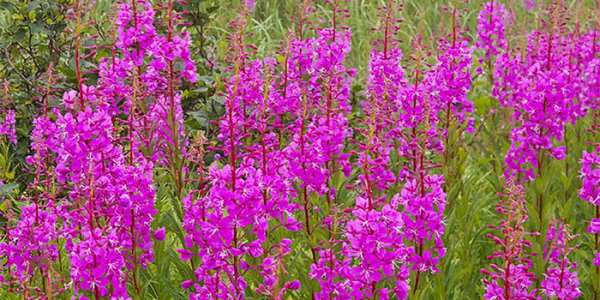
Bay leaf
Essential oils and organic acids in bay leaves have bactericidal, antipruritic and decongestant effects. Recipe No. 1:
- Brew 25 leaves with 3 liters of boiling water, leave for six minutes.
- Drink a glass throughout the day before meals.
Camphor, cineole and fatty acids relieve pain and have an antithrombotic effect. Recipe No. 2 with bay leaf:
- Pour 30 g of leaves into three liters of water, boil, and keep on low heat for two hours.
- Drink a quarter glass three times a day before meals.
- The course is until the product runs out.
- Pour 100 g of laurel into 5 liters of boiling water, cool, and take a bath with it.
- Instead, you can apply compresses soaked in the infusion, or make microenemas.
Herbal remedy for hemorrhoids
The anti-hemorrhoids collection includes several types of herbs, brewed in a special way and taken orally. Recipe No. 1:
- Mix 50 g of buckthorn bark and nettle leaves, pour a liter of boiling water, and keep in a water bath for 15 minutes.
- Cover the pan with the broth with a towel and leave for half an hour.
- Strain, cool, drink a glass 4 times a day.
- For preventive purposes - 2 times a day for a course of 5-7 days.
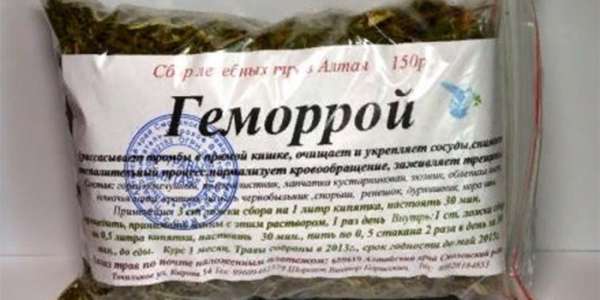
The course of treatment according to the following prescription No. 2 lasts 7-12 days, can be used for prevention:
- Combine equal parts of coriander seeds, yarrow herbs, buckthorn bark, senna leaves, and licorice root.
- Pour 200 ml of boiling water over a tablespoon of herbs and simmer in a water bath for six minutes.
- Drink half a glass twice a day 15-20 minutes before meals.
- It is allowed to dilute the herbal decoction with the same amount of cool water.
- The collection has a laxative, hemostatic, analgesic, and antispasmodic effect.
